#6 The Importance of Visuals for the Zwarte Piet Debate
- AnissaSdm
- Nov 23, 2019
- 2 min read
Updated: Dec 6, 2019
Visuals, a Tool for Online and Twitter Debates
Beyond the textual argumentation, the online world can offer other ways to express oneself and to share ideas and information through the use of visuals. This outlet provides a great freedom thanks to the wide array of potential documents to be used: videos, photographs, cartoons, memes, photo montages, edits and so on.
These documents can change the rules of the argumentation. Indeed, as the saying goes: a picture is worth a thousand words. On a platform such like Twitter with such a word-limitation and authors aware of their public and potential response, visuals can be liberating. They can support a short statement or even completely replace words. And, they appeal to the public eye. They are easy-to-consume content and adds to the overall straightforwardness that social media offers.
Three main trends in the use of visuals can be identified. When they do not support a constructed message, they are used in place of such. And, in line with the trends found in worded and apparently argumentative posts, a lot of them do not seem to bring value to the debate. Rather, they are often intended at digressing the debate and directly attacking the opponent group. However, on the day of physical demonstration, visuals were widely used to project the importance of one current over the other and to disseminate the debate.
Visuals to Consolidate the Argument: Photographs and Memes
Betting on Visuals: Posts without Words
Understanding the value of visuals, some Twitter users decide to only use visuals to convey their message. Usually, the visual is supported by one or a few hashtags that guarantee the connection with the Zwarte Piet debate and/or help marking the user’s ideological position.
Indeed, it has to be noted that the use of a hashtag on Twitter is not random. A Twitter user using a hashtag wants his post, his contribution to be seen and to be attached to the wider discussion on the chosen topic

Visuals to Diminish the Opponent
If visuals change the rule of the argumentation, they also serve at bypassing the argumentation altogether. People would then use images to directly attack the opponent trend, instead of bringing anything valuable to the debate.

Celebration / Demonstration: The Vividness of the Debate on D-Day
On November 16th, 2019, the day of the Dutch celebration of the arrival of Sinterklaas and Zwarte Piet this year, Twitter was used as a tool to document the event on both sides: the family celebration and the anti-racist demonstration. For both sides, two documenting medias were used: photographs and videos. On both sides, they were used as a means of justifying one current position and its apparent physical importance. They were also used at reviving the debate.
Concluding Remarks
The use of visuals on Twitter serves a definite purpose concerning the Zwarte Pete debate. Visuals fuels the latter by overwhelming it with easy-to-consume content and, especially, easy-to-answer-to information.




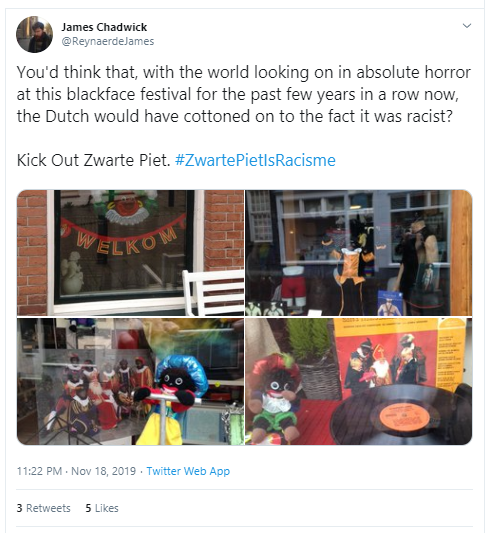

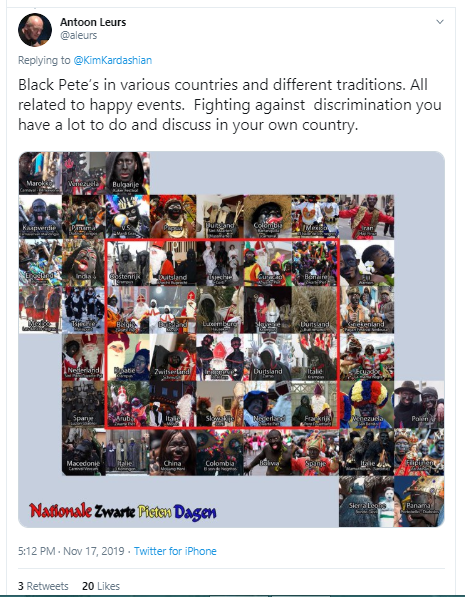

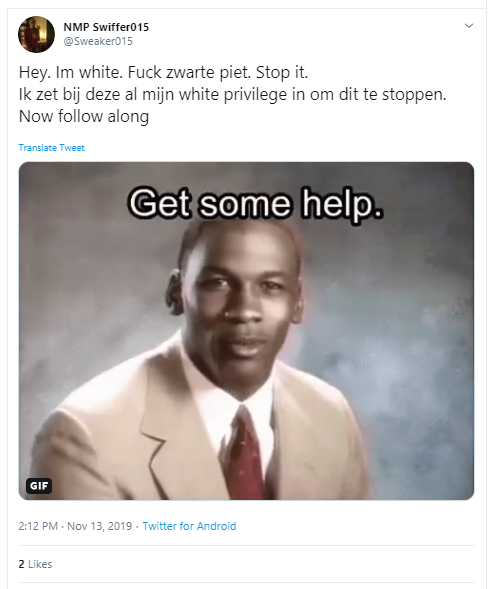

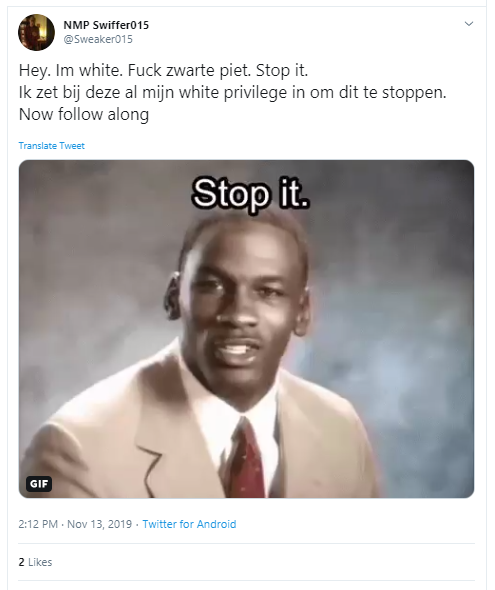





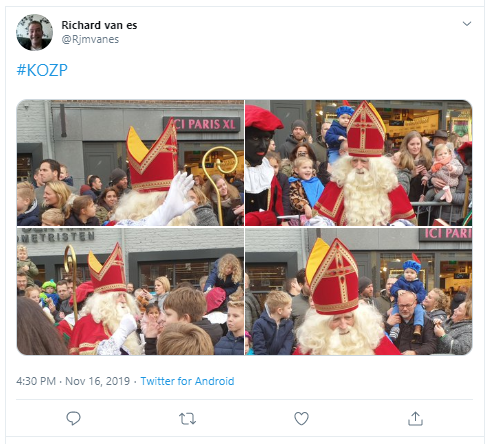









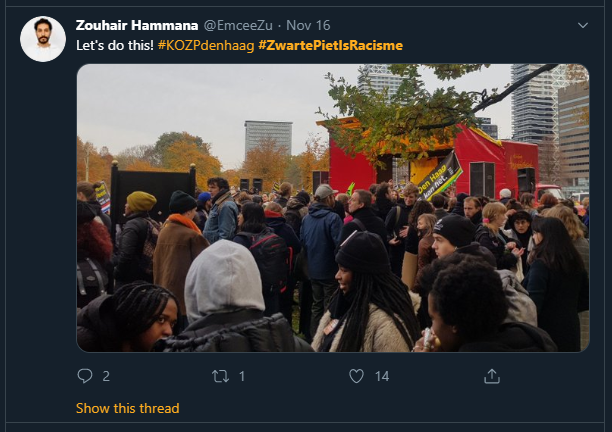

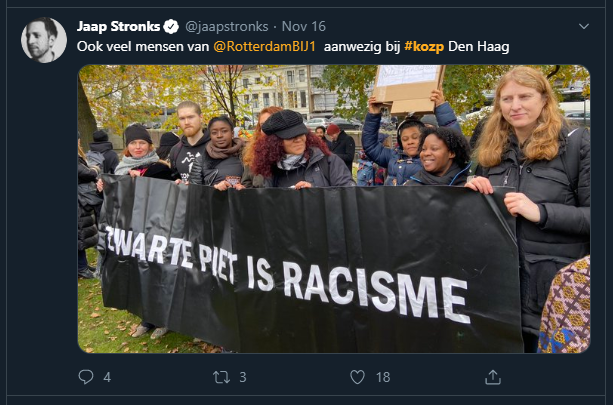





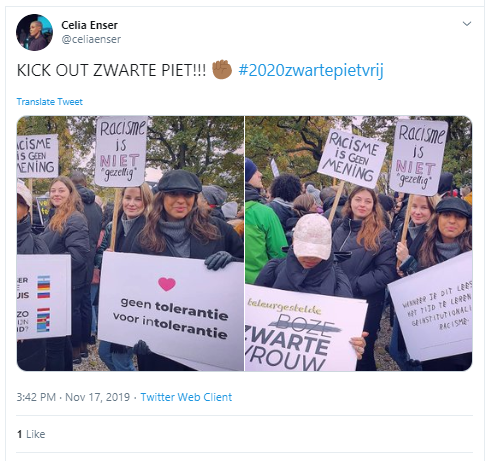



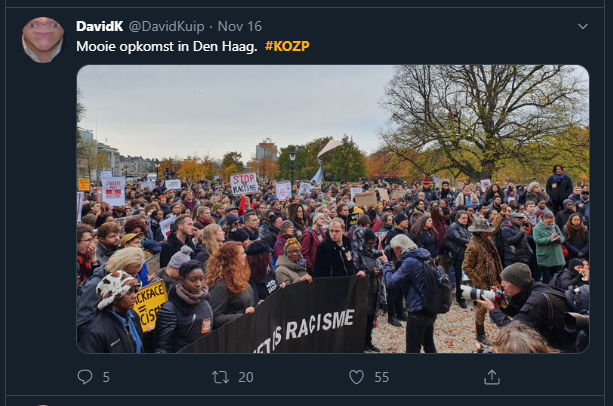




Comments